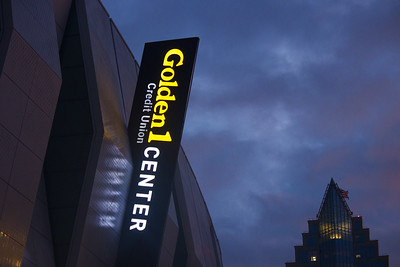The City of Sacramento is finding out the hard way why entities shouldn’t use their General Fund to guarantee bond repayments. Due to the pandemic and the way a bond deal was structured, the City will be forced to draw on its General Fund for as much as five years.
In 2015, the City of Sacramento entered into an agreement with the Sacramento Kings (NBA franchise) to shoulder some of the cost of building a new arena for the team. The projected cost at the time of the build was $477M. According to the agreement, the team would pay around $254M, and the city would pay the remaining $223M.
The city issued bonds for its portion of the project and assumed that it would be able to use a combination of hotel tax revenues and parking revenue to generate money to pay the bonds. New revenue streams from event ticket sales and profit-sharing agreements were supposed to make up the loss of the parking revenue, which would be redirected to debt service.
An inflation provision would raise the lease cost to the Kings between 3%-5% per year, beginning in Year 6 (2021) of the 35-year agreement. The Kings were to pay about $6.5M annually in lease payments for the use of the facility. That would escalate to $7.5M per year. Over time, the other revenue streams would die off, and the income from the lease was to be the only source of revenue to repay the bonds.
What could possibly go wrong?
General fund can’t be all things to everyone
Before the start of the project, opponents sued the City in the hopes of derailing the project. That did not happen, but the court proceedings delayed the project by more than a year. That delay increased the City’s cost of the build. Instead of issuing bonds for $233M, the City instead issued bonds for $300M. The annual debt service on the 5.67% fixed-interest bonds is about $18.3M.
The plan sort of worked for a while. In 2019, the two revenue streams generated about $8.5M. In 2020, the total revenue stream was $7.5M. The following year, the wheels fell off the plan; the two revenue streams generated just $2.5M, or one-third of the revenues generated just one year earlier. The pandemic certainly had enough firepower to shut down the arena – which it did, along with all the parking and hotels. These were the two revenue streams the City developed to pay the arena’s bond debt. In the absence of these funds, the City had pledged to use General Fund revenues.
So, if you notice, the actual revenue the City collected in 2019 (prior to the pandemic) and the annual debt service on the bonds are not the same number. In fact, the two numbers are not even similar. Layer in the pandemic, which extinguished most of the project’s anticipated revenues for FY 2022 and the City of Sacramento has a problem. The plan was supposed to break even in FY 2022, when the inflation provisions kicked in, and the new equipment installed in the parking garages was paid off. Until FY2022, the City would use its reserves to make up the difference between the incoming revenues and the outgoing bond debt.
Instead, the City will be using General Fund revenues to meet the project’s relatively constant debt service until further notice.
Institutions would be wise to develop back up plans
Sacramento could have put the matter to a vote and sought a tax to pay for the bond debt; instead, the City chose to raise revenues for the project by selling bonds that it guaranteed through its general fund.
While parking revenues are returning to the projected annual revenue, the other income sources haven’t materialized. After draining its reserves to fund the early years of the project’s debt service, the City is now stuck with taking money away from essential services to pay for bond debts.
According to ESPN, the Kings ranked 29th among 30 NBA teams for average home attendance in 2022. Their average home attendance in 2023 was 20th among all NBA franchises. To date this year, the Kings rank 16th in average home attendance. While their home attendance is improving, the Kings have ranked in the bottom half of all NBA teams for home attendance since the Golden 1 Center has opened.
How will the people react to cuts to police, fire, ambulance, sanitation, and road maintenance to ensure that Wells Fargo, Goldman Sachs, Morgan Stanley, and Bank of America/Merrill Lynch get their money on the arena project?
It’s easy to make predictions on paper. Numbers are very cooperative in the planning stages of any project. It’s less easy to construct a backup plan for what an institution will do when their Plan A stops working – or never started working in the first place.
Photo Credit: Matthew Keys, via Flickr



















